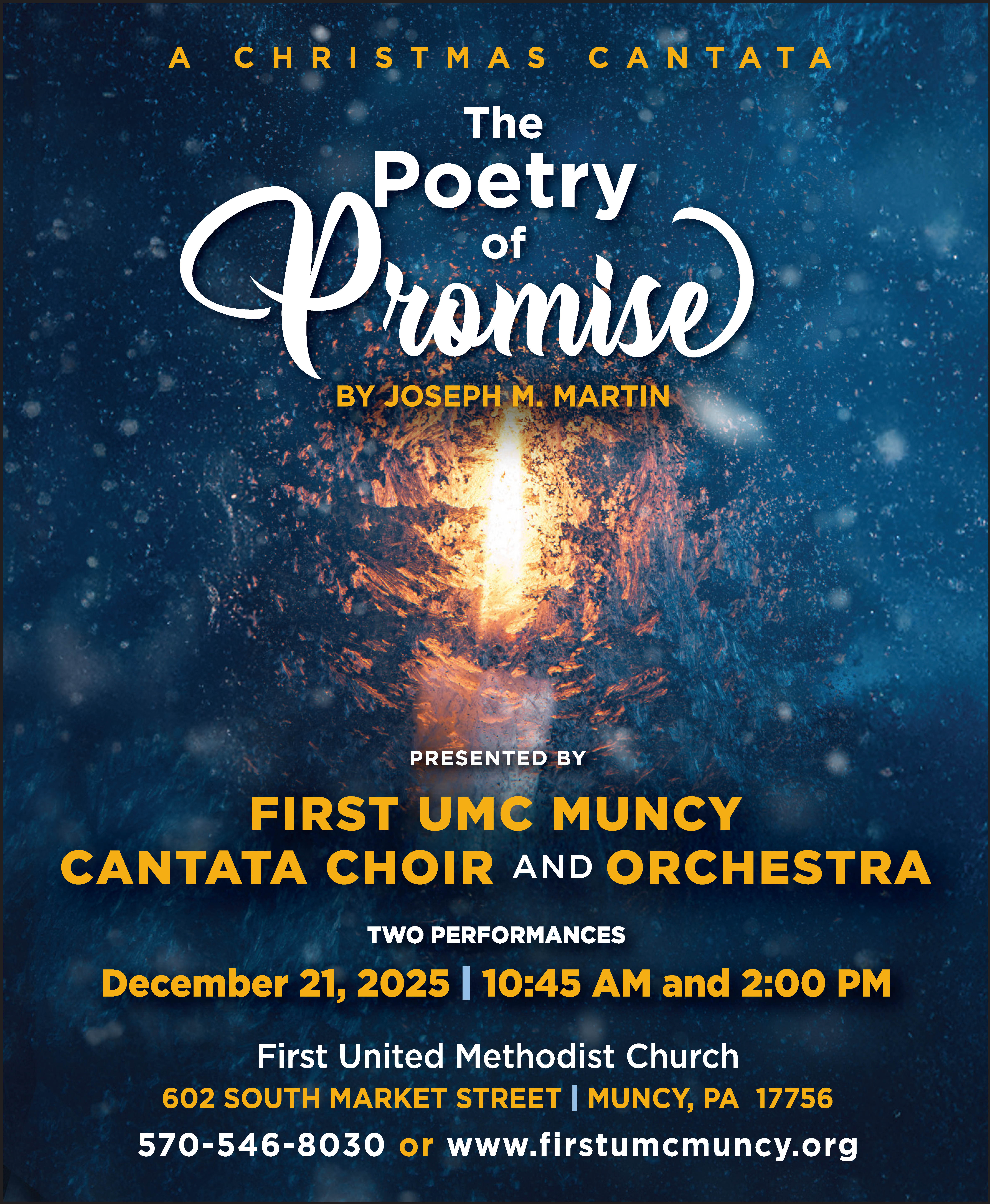It was announced recently that the Pennsylvania Historical and Museum Commission has authorized a Pennsylvania historical marker honoring late, distinguished local artist Frances Tipton Hunter to be erected locally. The marker is to be dedicated sometime in 2023. It has been speculated that the maker is to be placed appropriately enough in Way’s Garden, the site of the Way’s Garden Art Show, since its inception in 1957.
The Christmas season is often a celebration of children and a love of children, and Tipton Hunter celebrated children through her art.
Frances Tipton Hunter was one of the most gifted artists that this area has ever produced. She may not be in the realm of great artists whose works hang in prominent galleries in the great cities of this country anywhere else, but they endure as heartwarming celebrations of children and their world. Her art will surely produce a smile and evoke a carefree sense of nostalgia.
She was born in Howard, Centre County, on September 1, 1896, a descendent of Pennsylvania’s earliest settlers.
When Frances was six, her mother died, and she moved to Williamsport to live with her aunt and uncle, Mr. and Mrs. Edward McEntire.
She showed an early interest in art. She illustrated her early letters with drawings. She later explained, “This is a perfectly natural thing, for the first impulse is to express oneself, and the easiest way for a child to do this is by pictures.”
At Williamsport High School, she played on the girls’ basketball team and was staff for the Cherry and White, the high school’s literary magazine. She designed the cover of the last issue of 1914, the year she graduated. Surviving copies of this are highly sought after.
She modestly recalled her days at Williamsport High School, saying, “I distinguished myself by contributing some pretty bad drawings to the Cherry and White and playing unspectacular basketball.”
In 1915 she wrote an essay for the Grit. It probably best expresses her philosophy of art and why she liked painting children so much, “Personally, I prefer pictures of living, breathing creatures because they are God’s greatest creations. Again, I think to show by means of bare canvas and crude paints, the life, character mood, and even the thoughts of men are the highest type of art.”
After graduating high school, she attended the Philadelphia Museum School of Industrial Arts, where she graduated with honors under the tutelage of the noted illustrator Thornton Oakley. She later studied at the Philadelphia Academy of Fine Arts.
She received her first professional recognition as an artist when she won a $500 Wannamaker Prize. That led to her to do illustrations for Wannamaker’s clothing ads, particularly children’s clothing.
She said she had a special interest in drawing children and, as a result, “watched them closely.”
Her illustrations graced the covers of many nationally prominent magazines such as Collier’s, Good Housekeeping, Ladies Home Journal, Look, Red Book and The Saturday Evening Post (the same magazine that Norman Rockwell had numerous cover paintings for).
She worked mostly in watercolor and pen and ink. Her oil works were unsigned and never sold.
She was named to “Who’s Who in American Art” in 1938 in recognition of her extensive and well-received children’s illustrations.
She illustrated two books, The Frances Tipton Hunter Picture Book and Boo, Who Used to Be Afraid of the Dark.
Her work has been compared favorably to such artistic luminaries such as Maxfield Parrish, Douglas Crockwell, Paul Detlefsen, and of course, Norman Rockwell.
Several of her works are displayed in the James V. Brown Library Children’s Room.
During Williamsport’s Sesquicentennial Celebration in 1956, she was honored as “a daughter of Williamsport.”
She died in Philadelphia on March 2, 1957, at the age of 61. She was buried in the Laurel Hill Cemetery in that city.
The Sun-Gazette memorialized her in an editorial on March 5, 1957, writing in part, “Williamsport has lost one of its most gifted daughters in the death of Frances Tipton Hunter, an artist and illustrator of national reputation. Her warm human-interest pictures—especially those of children and pet animals endeared her to a national audience. Few persons from this community have gained greater national prominence than she enjoyed, and few treasured their recollections of childhood and youth in this city more dearly than she.”
She is truly an artist worthy of honor.



